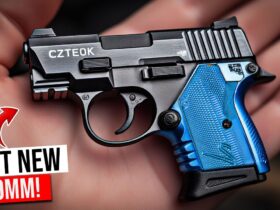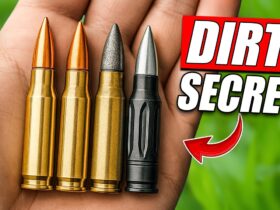Last time, we described a mass casualty incident (MASCALs) where 20 people were victims of a bomb planted by a nearby hostile group. You were the first to arrive and quickly scanned the scene, using the 5 S’s of mass casualty management discussed in part 1 to get organized and contact fellow group members.
You then shouted “(I’m _____ and) I’m here to help. If you can walk and need medical attention, get up and move to the sound of my voice. If you are uninjured and can help, follow me.” Eight victims needed medical assistance but able to walk are directed to an area for walking wounded; two others are relatively unhurt and volunteer to help.
To review the primary triage categories:

Immediate (Red tag): The victim needs immediate medical care and will not survive if not treated quickly (for example, a major hemorrhagic wound/internal bleeding). Top priority for treatment.
Delayed (Yellow tag): The victim needs medical care within 2-4 hours. Injuries may become life-threatening if ignored, but can wait until red tags are treated (for example, an open fracture without major hemorrhage).
Minimal (Green tag): Generally stable and ambulatory (“walking wounded”) but may need some medical care (for example, 2 broken fingers, sprained ankle).
Expectant (Black tag): The victim is either deceased or is not expected to live (for example, open fracture of the skull with brain damage, multiple penetrating chest wounds).
In the classic S.T.A.R.T. system, RPMs (Respirations, Perfusion, and Mental Status) are used to rapidly assess a victim.
Your goal is to use RPMs to find out who out of the ten remaining victims on the ground will need help most urgently (red tags). Any one failed RPM check tags the victim as red.
In part 2, we discussed RPMs (Respirations, Perfusion, and Mental Status)

1.Respirations: Is your patient breathing? If not, restore the airway by tilting the head back and lifting the chin or, if you have them, insert an oral airway (Note: in MCI triage where time is of the essence, the rule against moving the neck of a victim due to risk of cervical spine injury is, for the time being, suspended).
If you have an open airway but no breathing, that victim is tagged black. If the victim begins to breathe once an airway is restored or has a respiration rate of more than 30 times a minute (or less than ten), tag red. If the victim is breathing normally, move on to perfusion.
2.Perfusion/Pulse: Perfusion involves evaluating the adequacy of blood flow and circulation. Check for the presence of a (wrist or neck) pulse, then press on a nail bed or finger pad firmly and quickly remove. The coloration will go from pale back to normal color in less than two seconds if circulation is good. This is referred to as the Capillary Refill Time (CRT). If you’re not feeling a pulse or it takes longer than 2 seconds for nail bed color to return, tag red. If you feel a pulse and CRT is normal, move to mental status.
3.Mental Status: Can the victim follow simple commands (“open your eyes,” “squeeze my hand”)? If the patient isn’t breathing excessively fast and has normal perfusion, but is unconscious or disoriented: Tag red. If they can understand you and follow commands, tag yellow if they can’t get up, or green if they can. Remember that, as a consequence of the explosion, some victims may not be able to hear you well.
Remember all this by thinking “30-2-Can Do”:
- 30 (Is the respiration rate less than 30/minute? It should also be more than 10/minute.)
- 2 (Is the CRT less than 2 seconds?)
- Can Do (Can the victim follow simple commands?)
A “No” answer to any of the above tags RED. Note that children have higher respiratory rates than adults, 45 respirations are used instead of 30.
In the classic S.T.A.R.T. system, you’ll start with the closest victim; in the newer S.A.L.T. system, you will have asked the ten victims on the ground to wave at you. The ones who don’t wave get seen first.
If there is any doubt as to the category, always tag the highest priority triage level. Not sure between yellow and red? Tag red. Once you have identified someone’s triage level, tag them and move immediately to the next patient unless you have major bleeding to stop.
When there are multiple victims, spend only as much time as is needed to determine the triage level. The only actual treatment you’ll provide in the primary triage phase will be to stop heavy bleeding and clear airways with a CPR-style chin-lift jaw thrust. If shock is suspected, elevate the legs above the level of the heart. In this way, you’ll do the most good for the most people in the shortest amount of time, if not the best for every individual. In the S.A.L.T. system, certain life-saving interventions like using autoinjector antidotes or a lung decompression needle, if available and trained, are added.
THE VICTIMS

Now, let’s return to our particular mass casualty scenario. You have identified eight walking wounded and moved them to a designated area. You have two relatively unhurt victims who are willing to assist you. Finally, the list below contains the remaining ten victims on the ground, S.T.A.R.T.ing with the nearest (Remember, the S.A.L.T. system starts with those who can’t “wave” when prompted). Read the descriptions and decide the primary triage level; be sure to utilize your helpers wisely. Afterwards, we’ll discuss how we triaged them in detail.
Victim 1: Male in his 40s, complains of pain in an obviously broken right leg. Respirations 22, pulse strong, CRT 1 second, no excessive bleeding.
__________ Red __________ Yellow _________ Green __________ Black
Victim 2: Teenage girl bleeding heavily from a deep laceration in her right thigh, respirations 32, pulse thready, CRT 2.5 seconds, follows commands.
__________ Red __________ Yellow _________ Green __________ Black
Victim 3: Female in her 40s, bleeding from nose, ears, and mouth. Seems to be trying to sit up but can’t. Respirations 22, pulse present, CRT 1.5 seconds, doesn’t respond to your commands.
__________ Red __________ Yellow _________ Green __________ Black
Victim 4: Young girl, maybe 11 or 12 years old with a small laceration on forehead. She says she can’t move her legs. Respirations 20, pulse strong, CRT 1 second.
__________ Red __________ Yellow _________ Green __________ Black
Victim 5: Male in his 50s, first and second-degree burns on face, chest, and arms. Respirations 22, CRT 1.5 seconds, follows commands. Obviously in pain but can stand.
__________ Red __________ Yellow _________ Green __________ Black
Victim 6: Male in his 20s, head wound, respirations absent. Airway repositioned, still no breathing.
__________ Red __________ Yellow _________ Green __________ Black
Victim 7: Teenage boy, some abrasions present but no evidence of major hemorrhage. Says, with difficulty, that he can’t breathe. Respirations 34, pulse present, CRT 2.5 seconds
__________ Red __________ Yellow _________ Green __________ Black
Victim 8: Female in her 20s, some burns on neck, face, and arms. Respirations 22, pulse present, CRT 1 second. She asks if she can get up. She can walk, albeit with a limp.
__________ Red __________ Yellow _________ Green __________ Black
Victim 9: Elderly woman, bleeding heavily from an amputation at the level of the mid-upper right arm, respirations 36, pulse on other wrist absent, CRT 3 seconds, unresponsive.
__________ Red __________ Yellow _________ Green __________ Black
Victim 10. Male child, multiple penetrating injuries, respirations absent. Airway repositioned, starts breathing. Pulse barely palpable but CRT 2 seconds, unresponsive.
__________ Red __________ Yellow _________ Green __________ Black
MCI Scenario Results

On the previous pages, we described a mass casualty incident scene with 20 victims. We told you about initial considerations before beginning S.T.A.R.T. (Simple Triage and Rapid Treatment) and the RPM system for determining triage level. You ended up with 10 victims on the ground, 8 walking wounded, and 2 uninjured but unskilled helpers. You moved the walking wounded to a separate area and are now ready to quickly triage the remaining 10 victims.
Remember your triage evaluation parameters: respirations, perfusion, mental status:
30 (respirations) – 2 (CRT) – Can Do (follows commands)
Your two uninjured helpers are an able-bodied man and woman. The woman knows how to take a pulse. You have no medical equipment with you other than some oral airways and triage tags to work with.
Victim 1: Male in his 40s, complains of pain in an obviously broken right leg. Respirations 22, pulse strong, CRT 1 second, no excessive bleeding.
Despite the fracture, respirations are within the acceptable range (less than 30). The pulse and CRT are normal. The victim complains of pain and is communicating where it hurts, so mental status probably normal. This patient is tagged YELLOW: needs care but will not die if there is a reasonable (two to four hour) delay. Move on.
Victim 2: Teenage girl bleeding heavily from a deep laceration in her right thigh, respirations 32, pulse thready, CRT 2.5 seconds, follows commands.
This victim is still mentally “with it” but is seriously hemorrhaging, one of the reasons to stop and treat during triage. Respirations elevated and perfusion impaired. You use one of your helpers to apply pressure by placing his hands (he’s not wearing a belt) on the wound with direct firm pressure, preferably using his shirt as a barrier. If he had, say, a bandanna and a pen, you could rig a makeshift tourniquet. The bleeding seems to be less with the direct pressure. Tag RED. You and your remaining helper move on.
Victim 3: Female in her 40s, some bleeding from nose, ears, and mouth. Seems to be trying to sit up but can’t. Respirations 22, pulse present, CRT 1.5 seconds, doesn’t respond to your commands.
This victim seems to have a significant head injury. Is it just a concussion? She appears stable from the standpoint of respirations and perfusion, but a significant traumatic brain injury certainly can’ t be ruled out. As her mental status is impaired, tag RED (immediate). Move on.
Victim 4. Young girl, maybe 11 or 12 years old with a small laceration on forehead. She says she can’t move her legs. Respirations 20, pulse strong, CRT 1 second.
You would think this victim is pretty much okay by her external appearance and RPMs, but she can’t get up. It’s likely she has trauma to her spinal cord. You don’t see much bleeding other than her forehead and she’s moving her arms, but her pants are stained with urine, a possible sign of spinal cord injury lower down. This person potentially has big problems, but is likely not in danger of dying in the next two to four hours. She will have to wait until some of the other victims are treated. Tag YELLOW. Move on.
Victim 5: Male in his 50s, first- and second-degree burns on face, chest, and arms. Respirations 22, CRT 1.5 seconds, follows commands. Obviously in pain but can stand.
This victim has significant burns on large areas, but is breathing well and has normal perfusion. He’ll have a problematic recovery, but he is mobile enough to make it to the area for the walking wounded. You tag GREEN and move on.
Victim 6: Male in his 20s, head wound, respirations absent.
You reposition his airway, but still no breathing. With a major head wound and lack of respiration despite an open airway, this person is, for all intents and purposes, deceased (especially off the grid). Tag BLACK, move on.
Victim 7: Teenage boy, some abrasions present but no evidence of major hemorrhage. Says, with difficulty, that he can’t breathe. Respirations 34, pulse present, CRT 2.5 seconds.
This victim wouldn’t look so bad if he wasn’t having so much trouble breathing. Perfusion is questionable. Mental status is unimpaired, but he likely has other issues: perhaps internal bleeding or a collapsed lung. A distended abdomen would suggest a bleed, while distended neck veins might indicate a tension pneumothorax (collapsed lung). You tag RED (respirations over 30, impaired perfusion) and move on. In the SALT system, a pneumothorax could be treated with a decompression needle, if available and trained, before moving on to the next victim.
Victim 8: Female in her 20s, some burns on neck, face, and arms. Respirations 22, pulse present, CRT 1 second. She asks if she can get up. She can walk, albeit with a limp.
Obviously injured, this young woman is in pain but otherwise appears stable and communicates. With assistance, she is able to stand up, and can walk by herself. She becomes another of the walking wounded, tag GREEN. Point her to the other GREEN victims and move on
Victim 9: Elderly woman, bleeding profusely from an amputation at the level of the mid-upper right arm, respirations 36, pulse on other wrist absent, CRT 3 seconds, unresponsive.
Obviously in dire straits, you use your belt as a tourniquet. There are no holes in the strap that fit a skinny arm, so you’ll have to sacrifice your remaining helper so she can apply pressure and hold the belt tight. Tag RED, move on alone.
Victim 10: Male child, multiple penetrating injuries, respirations absent. Airway repositioned, starts breathing. Pulse barely palpable but CRT 2 seconds, unresponsive.
You initially think this child is not going to survive, but you follow protocol and reposition his airway by tilting his head back. To your surprise, he starts breathing even without an oral airway but is still unresponsive, so you tag him RED. You apply pressure to his wounds as the additional help you originally requested begins to arrive.
We used the example of a child as our last victim to introduce a variation to the START system known as “JumpSTART.” In kids under eight years old, JumpSTART takes into account the difference in normal respiratory patterns for children. If the child’s age is uncertain, the medic can assess for underarm hair in males or breast development in females as an indicator of approximate age.
In JumpSTART, CPR rescue breaths are given to children with a pulse but no breathing. The START respiratory rate is modified from more than 30 breaths per minute to either less than 15 or more than 45. If the child described above had not begun to breathe spontaneously with the head tilt, you would have given rescue breaths and then rechecked. If still no breathing, a BLACK tag would have been given.

Once you have further sorted the victims (sometimes, a GREEN tag’s condition worsens) and transported them to your field hospital, a heartbreaking and controversial variation on normal procedure is proposed. In normal settings, children are given priority for care over adults in the same triage class; after all, they have more potential years of life ahead of them. In survival scenarios, concentrating on those with irreplaceable skills (usually adults) may be necessary for the long-term survival of the group. It’s your call.
What did you accomplish in our simulation? You have performed triage on 20 victims, including the walking wounded, in 10 minutes or less. There is still much to do, but you have identified those victims who need the most urgent care. As you gained experience with RPMs, perhaps you could tell, almost at a glance, when someone was in respiratory distress or wasn’t mentally alert.
Help from your survival group begins to arrive, including a trained nurse. You’re no longer the most experienced medical resource at the scene; therefore, you are relieved of Incident Command. The nurse begins the process of assigning areas where secondary triage and treatment can occur.
In a normal situation, your modern medical facilities will already have ambulances and trained personnel with lots of equipment on the scene. If a disaster takes away modern medical care, however, the prognosis for many of your victims will be grave. Go over our list of victims again and see who you think would survive if modern medical care is not available. Many of the RED tags and even some of the YELLOW tags would be in serious danger of dying from their injuries.
Joe Alton MD

We’re pleased to announce that Skyhorse Publishing has put out a hardcover edition of Dr. Alton’s Christmas story book “Snowbie, The First Snowman.” Reading to kids at a young age pays dividends down the road socially, educationally, and emotionally. They’ll love it!

Find it at Amazon: https://www.amazon.com/s?k=snowbie+the+first+snowman&crid=2MEOPMAM5ZM68&sprefix=snowbie%2Caps%2C175&ref=nb_sb_ss_ts-doa-p_3_7
Read the full article here







Leave a Reply